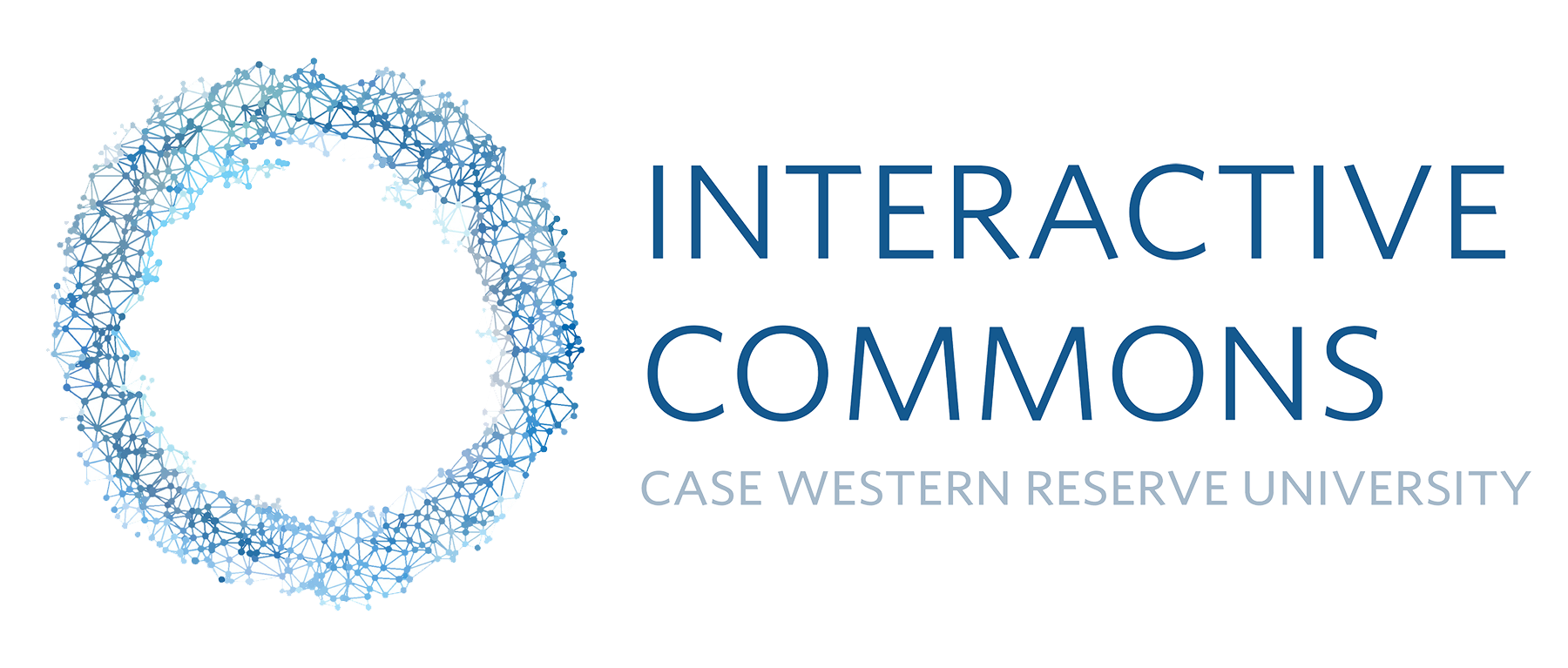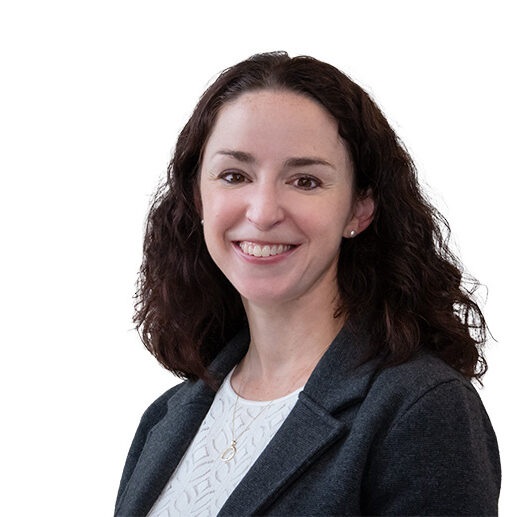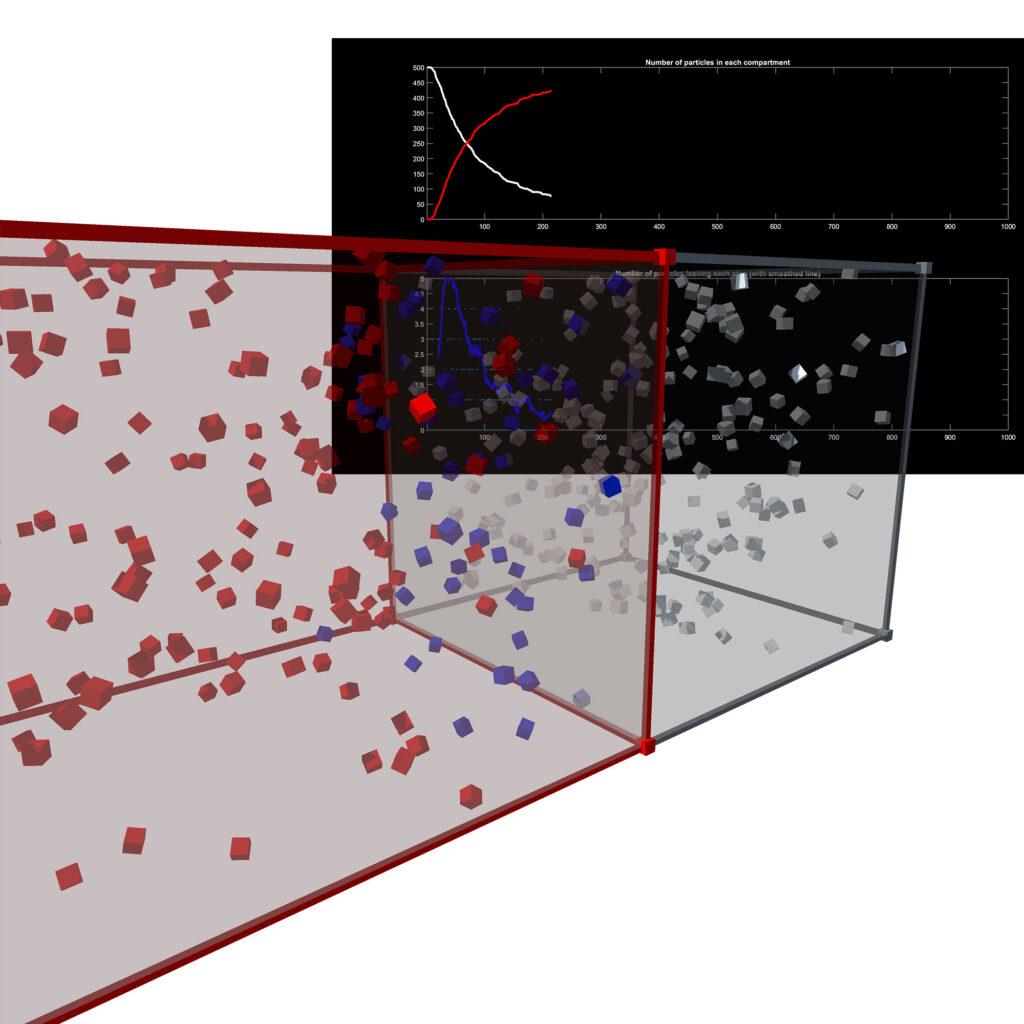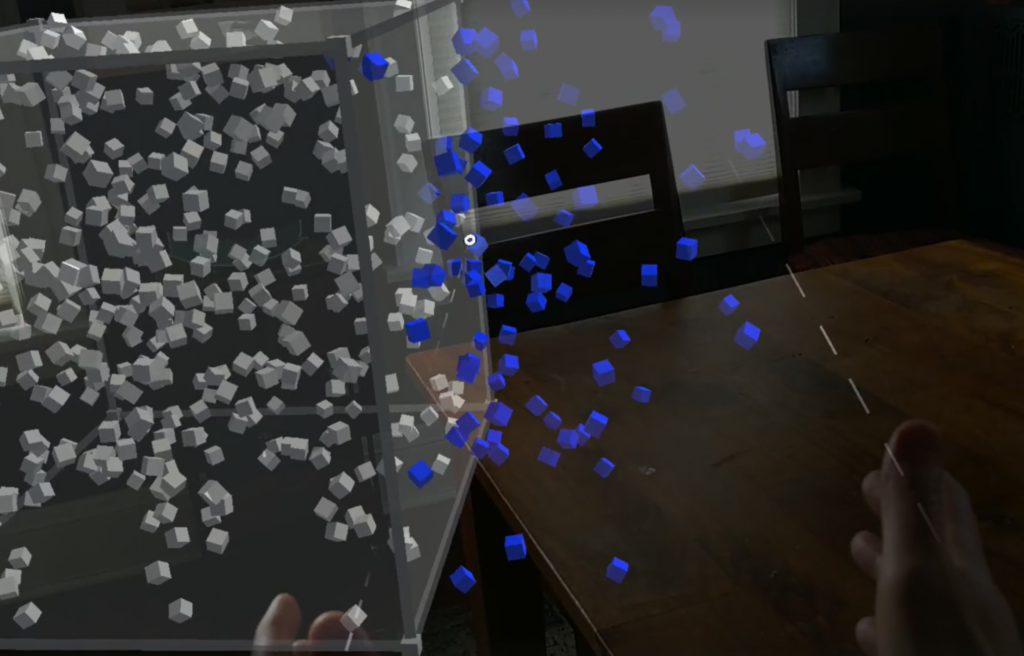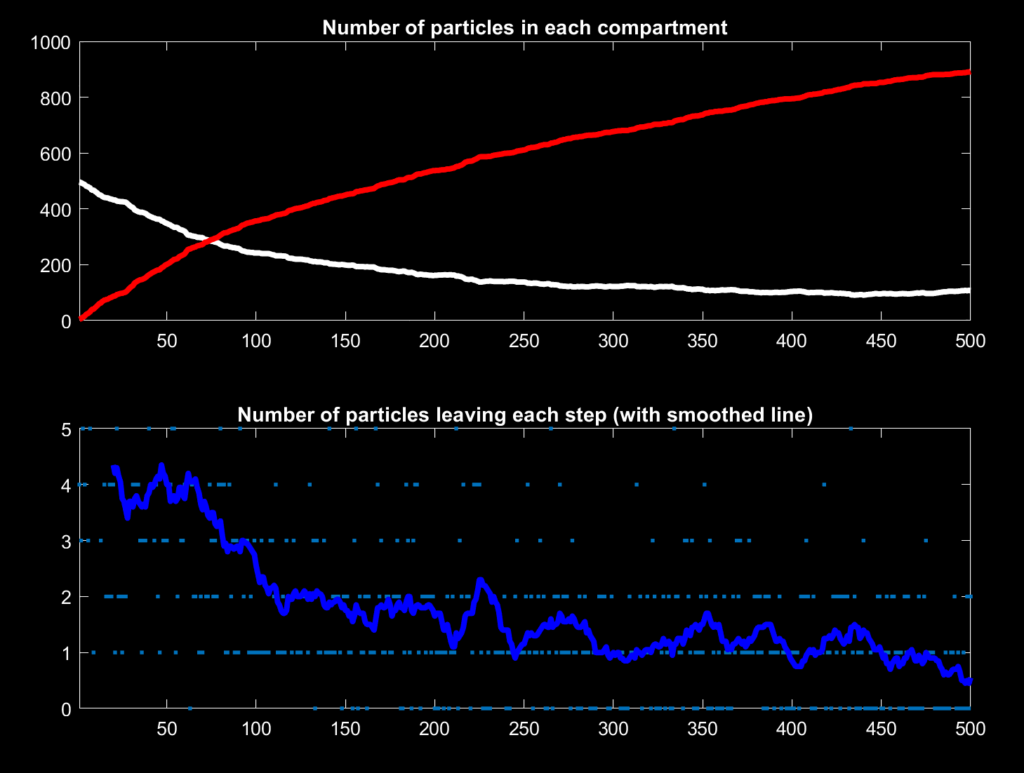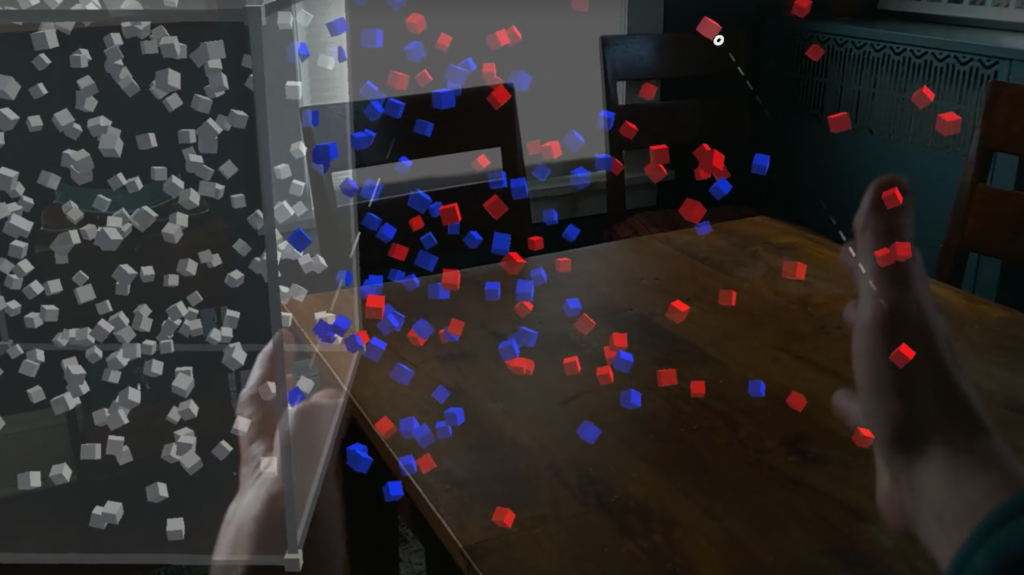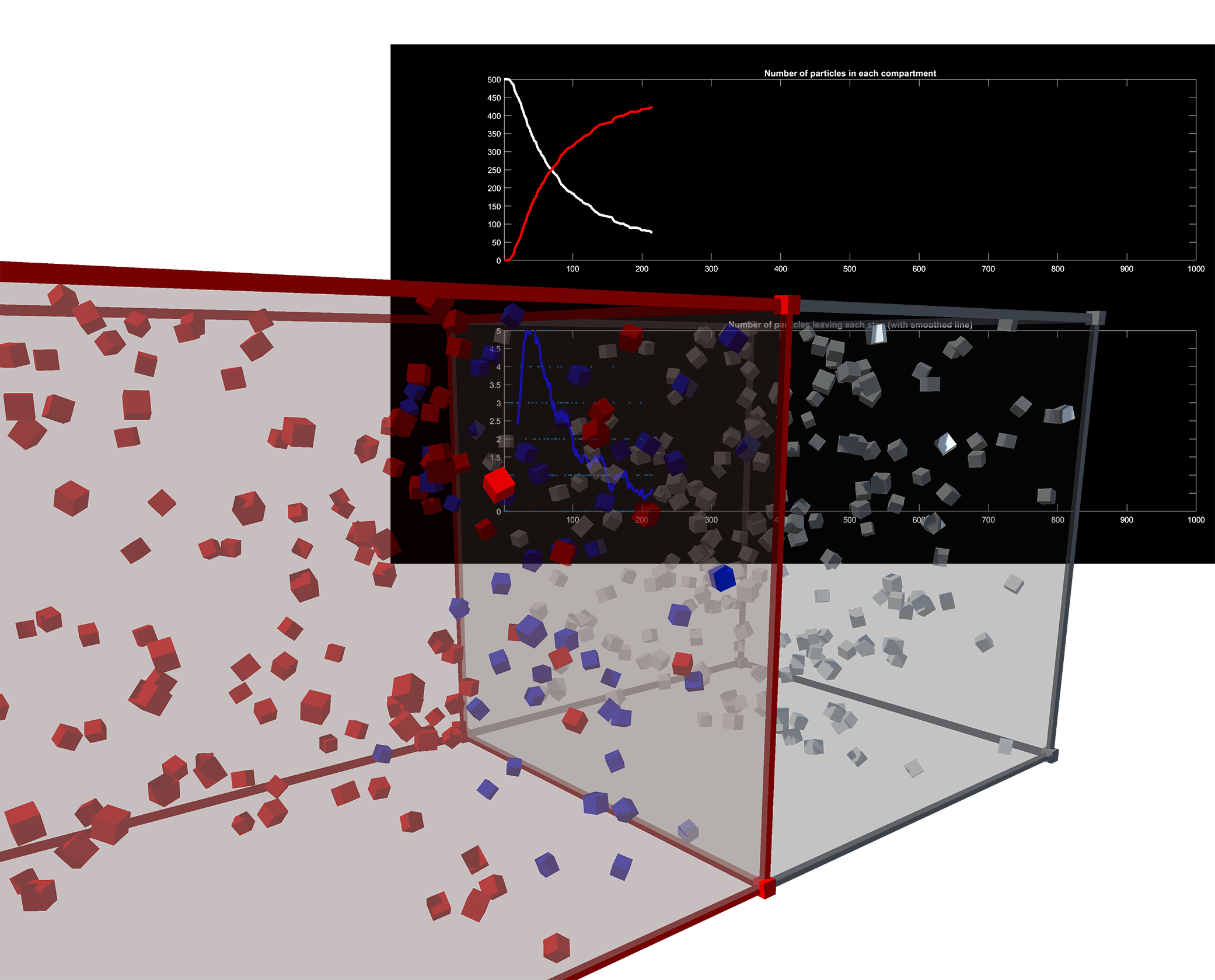
Dr. Debra McGivney teaches modeling as it pertains to biomedical engineering, which is a way to simplify real-world systems into equations in order to better understand them. For example, if we can simplify a complex system such as drug delivery into a model, we can then study, predict, and tweak it as necessary to improve pain management. Dr. McGivney can clearly see the math in her head, but she knows that’s not the same for all of her students and wanted to create a way in for visual learners, as well.
The app developed during her fellowship year (Biophysical Modeling) connects coding software on a laptop to the HoloLens to display an abstract visual representation of the same model at the same time. For example, when comparing the rate of drug metabolization of an injection vs. an IV, two graphs appear on a laptop and simultaneously two holographic “bloodstreams” appear in the field of view. Users can see drug molecules enter the bloodstream and then change color as they are metabolized.
